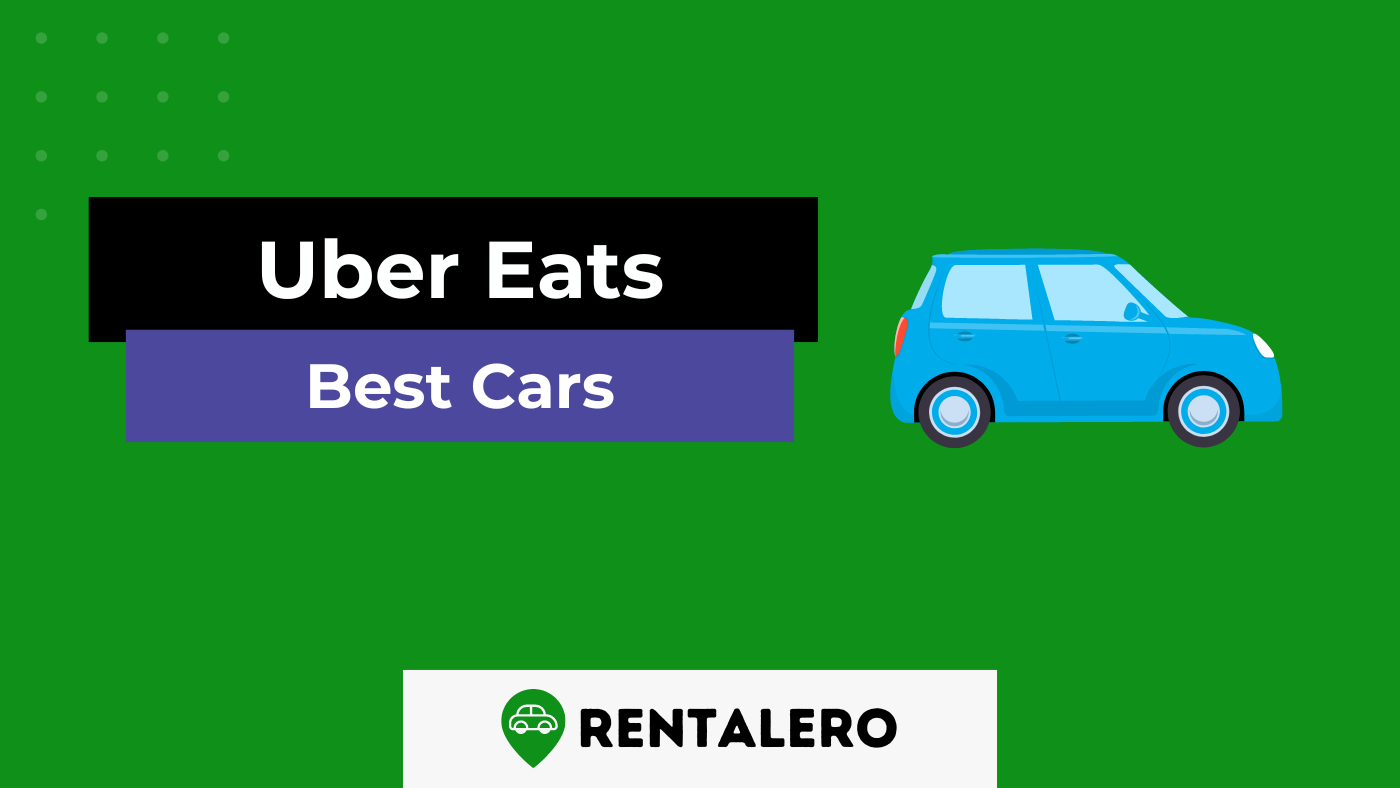Selecting the right car for Uber Eats isn’t just about picking any vehicle. It’s about making smart choices for your earnings and how smoothly your deliveries go.
In this piece, we’ll break down the top factors that matter when choosing a car for Uber Eats. You’ll discover:
- Which cars have the best space for your deliveries?
- How much will fuel cost for different cars?
- Factors that make a car reliable and cheap to maintain.
Stick around, and by the end, you’ll understand which car fits your Uber Eats delivery needs. Better choices, more earnings.
Let’s go!
Advertising links are marked with *. We receive a small commission on sales, nothing changes for you.
Key Takeaway
- Selecting the best car for Uber Eats involves balancing fuel efficiency, space, and reliability.
- Personal factors, like budget and driving comfort, heavily influence the final choice.
- Brand preference, tech features, and resale value can also sway decisions.
- Test-driving different models ensures you find the right comfort level for long hours on the road.
- The ideal car aligns with your work needs and personal preferences, maximizing your success in the delivery business.
Primary Factors To Consider When Selecting A Car For Uber Eats
Picking the right Uber Eats delivery car can make or break your experience. Here’s what to think about:
Cargo Space
Different orders require different spaces. Sometimes, it’s a compact parcel; other times, a sizable order. Ensuring you have a car with ample space is essential. A spacious trunk or back seat can prevent food from being crushed, ensuring orders arrive in prime condition.
Fuel Economy
Fuel costs can quickly accumulate in the delivery business. Selecting a vehicle with good fuel efficiency can mean significant savings over time. A car that offers more miles per gallon can translate to increased earnings, as less is spent on fuel.
Reliability
A reliable car is indispensable for delivery. Delays due to vehicle issues can affect delivery times, customer satisfaction, and earnings. Opting for a vehicle known for its reliability can minimize disruptions and ensure a steady flow of deliveries.
Maintenance Expenses
Ongoing vehicle upkeep, from oil changes to tire replacements, comes at a cost. Some vehicles, by design, have lower maintenance needs and costs. Investing time in researching and selecting such a car can lead to financial benefits in the long run.
Safety Ratings
Safety should never be compromised. Opting for a car with high safety ratings ensures your protection and the condition of the orders you deliver. Features like robust brakes, quality tires, and adequate airbags provide a safer delivery experience.
Top Car Recommendations For Uber Eats
Choosing a car for Uber Eats goes beyond essentials like space and fuel efficiency. It’s also about what car models bring to the table. Here are some top recommendations and their stand-out features.
Toyota Prius
The Toyota Prius leads the pack with remarkable fuel efficiency, ensuring more of your earnings stay with you. It also provides ample cargo space, making it a common choice among Uber Eats drivers.
Hyundai Ioniq Hybrid
The Hyundai Ioniq Hybrid, like the Prius, offers excellent fuel efficiency and considerable cargo space. This car is a suitable candidate if you prioritize low fuel costs and sufficient room for deliveries.
Toyota Corolla And Toyota Corolla Hybrid
The Toyota Corolla and its hybrid variant are recognized for their reliability. This feature is crucial for timely deliveries. They’re also budget-friendly, making them a pragmatic choice for drivers seeking cost-effectiveness.
Mitsubishi Mirage
The Mitsubishi Mirage stands out for its affordability. Despite its compact size, it delivers decent fuel economy and cargo space. If you’re aiming for an economical choice that covers the essentials, consider the Mirage.
Volkswagen Golf/Jetta Sportwagen
The Volkswagen Golf and Jetta Sportwagen have diesel engines and large cargo spaces. If your delivery area has affordable diesel fuel, these models could prove beneficial.
Other Notable Mentions
While we’ve covered some key car recommendations, it’s worth exploring other popular options. These vehicles have features that, depending on your preferences and delivery locations, might be a great fit.
Hyundai Sonata Hybrid
This car strikes a balance. Its hybrid technology offers decent fuel savings. The Sonata has a spacious trunk, making it a smart pick for bulky orders.
Chevrolet Bolt EV
Going electric can be a smart move. The Bolt EV saves on gas because it is purely electric. And if you’re delivering in areas with charging stations, this could be a game-changer for your earnings.
Ford Fiesta And Ford Focus
Both of these models are well-liked for a reason. They’re reliable, affordable, and offer fair cargo space. If you want a blend of cost-efficiency and performance, these Fords have your back.
Light-Duty Trucks And Cargo Vans
Sometimes, bigger orders call for bigger vehicles. Trucks and vans might seem overboard, but they shine in particular situations. For instance, catering orders or larger events can demand more space. These vehicles can carry large orders with ease. Plus, they often have compartments to separate different items, ensuring everything stays neat.
Personal Preferences And Needs
Your personal preferences also play a big role when choosing the right car for Uber Eats. Here are factors you need to consider.
Budget
Determine what you can comfortably spend. This will help filter options, ensuring you don’t overspend.
Driving Comfort
Comfort is vital, especially when on the road for extended periods. Test drive various models to gauge the comfort level. Finding a car that feels right for those long delivery hours is essential.
Brand Preference
Brand loyalty can influence choices. Consider their models if you have a preferred brand due to past experiences or family recommendations. Just ensure they meet the requirements for Uber Eats deliveries.
Tech and Features
Modern cars come equipped with various features. Decide what’s essential for your delivery work. It could be a navigation system, parking sensors, or other tech features. Knowing what you want will help you make an informed choice.
Resale Value
If you plan on upgrading or changing cars in the future, consider the car’s resale value. Some cars depreciate slower than others, offering better value when sold.
Conclusion
Choosing the right car for Uber Eats requires careful consideration. You want a vehicle that’s fuel-efficient, spacious, and reliable. It’s also important to consider your needs, like comfort and tech features.
Factor in your budget and the car’s resale value. Ultimately, the ideal car aligns with your work demands and personal preferences.
By making an informed choice, you set yourself up for success in the delivery business.
Happy driving!
Frequently Asked Questions
What are the primary factors when choosing a car for Uber Eats?
Key factors include cargo space, fuel economy, reliability, maintenance expenses, and safety ratings.
Is fuel efficiency the most important factor to consider?
While fuel efficiency is crucial for saving costs, other aspects like space, reliability, and safety should not be overlooked. The ideal car is a balance of all these features.
Do I need a brand-new car for Uber Eats deliveries?
No, a brand-new car isn’t mandatory. What’s essential is that the vehicle is reliable, safe, and meets the platform’s requirements.
Can personal preferences like brand loyalty impact my choices?
Absolutely! You might lean toward their models if you have a preferred brand due to past experiences or recommendations. Just ensure they align with Uber Eats’ requirements.
Like a navigation system, is technology crucial for an Uber Eats vehicle?
While tech features can help make deliveries smoother, they aren’t mandatory. Decide which features are essential for your delivery work and choose accordingly.

Nzoputa has been writing for Rentalero since day one and is one of our most experienced members when it comes to the rental industry. For her, nothing beats Uber!
Advertising links are marked with *. We receive a small commission on sales, nothing changes for you.

